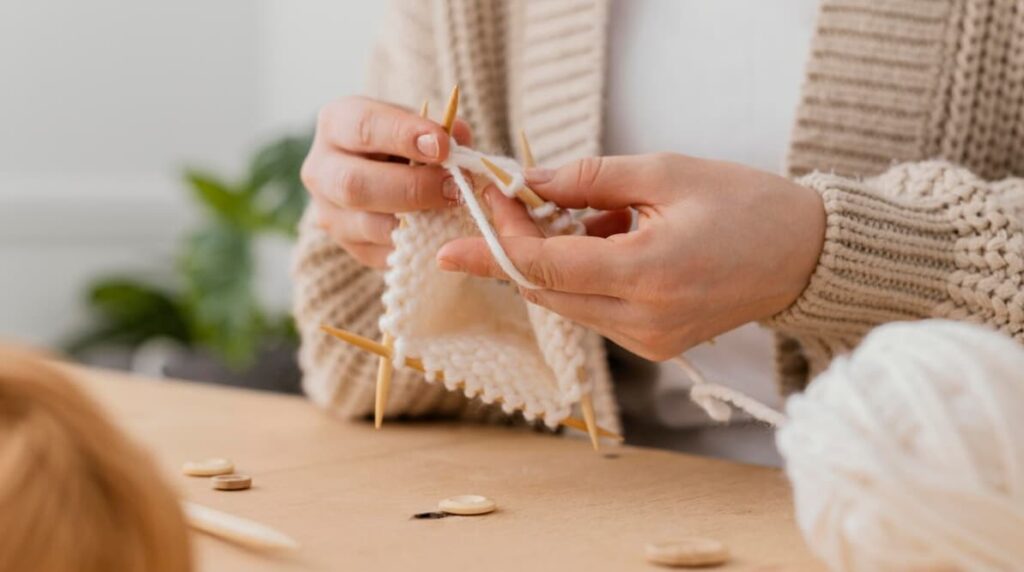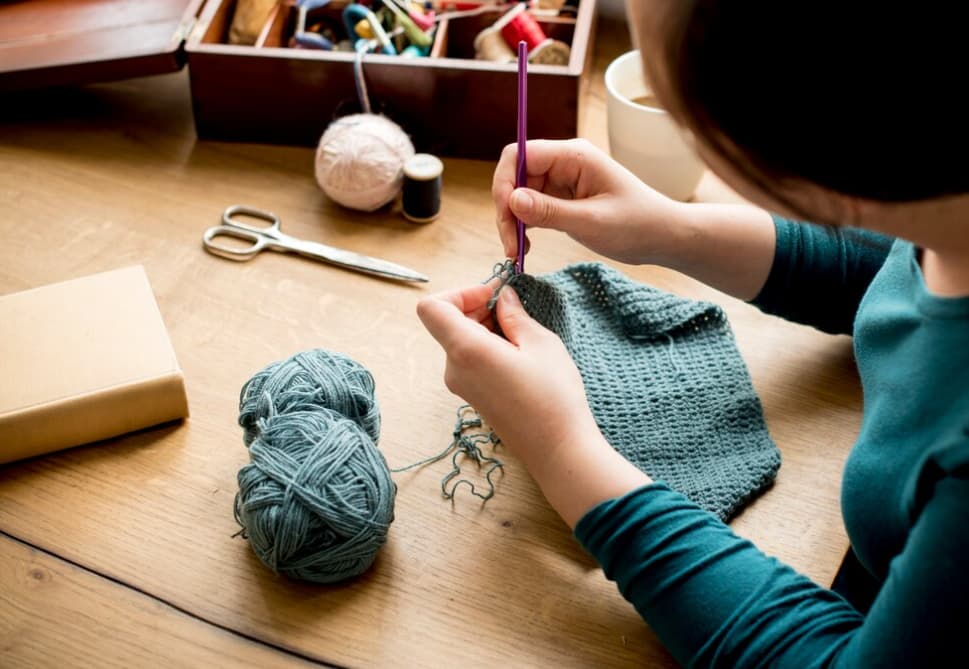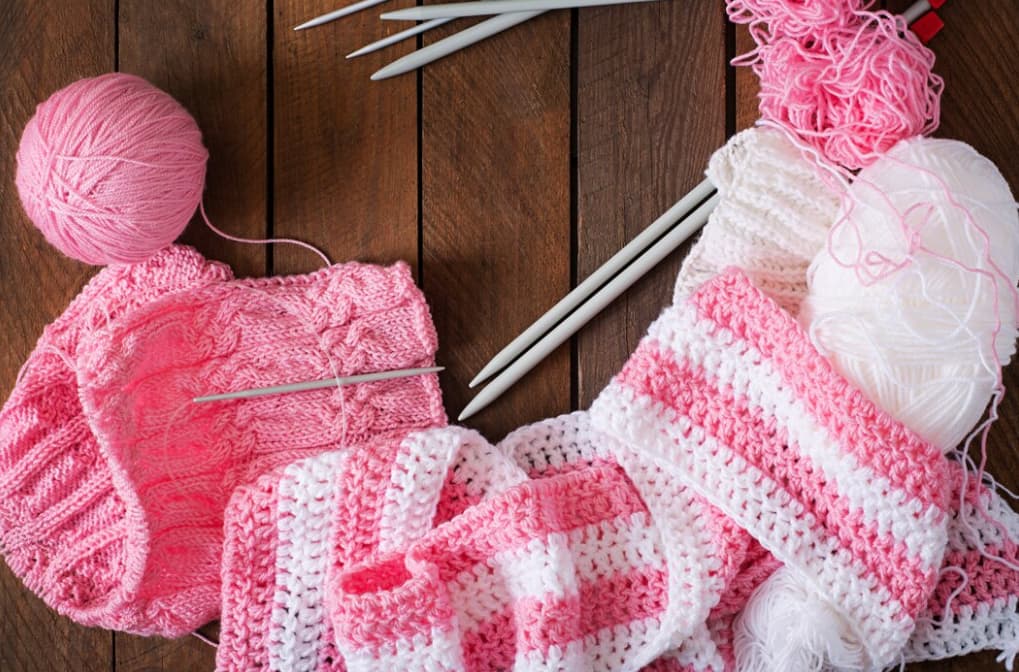Last Stitch Binding Off: Tips for Neatness
This tutorial provides a step-by-step guide on three alternative ways to neaten the last stitch of a bind-off in flat knitting projects. When finishing a project, the last stitch can be a challenge, especially if aiming for a neat edge. The tutorial begins with the easiest and most effective method, followed by two additional alternatives.
Typically, the last two stitches are bound off in the usual manner, then the working yarn is cut, and the final loop is pulled out completely, forming a knot. Although this method is secure, it can result in an “ear” due to the edge stitches being slightly loose, lacking anchorage on the left side. Mastering the final step of casting off the last stitch in knitting projects leads naturally to the broader question: is knitting as a whole a challenging craft to learn?
This guide will demonstrate how to handle the last stitch during the bind-off process to achieve a cleaner, more professional look.
Achieving a Tidy Finish: Last Stitch Instructions

This technique necessitates halting when two stitches remain. It’s important to provide support to the work while binding off these final stitches, preventing the weight of the project from excessively stretching them.
Materials: Any yarn is suitable. Schachenmayr Catania Grande is the choice for this tutorial.
Tools: Any knitting needle type suffices. Knitter’s Pride Dreamz needles are used in this instance.
Instructions
- Without knitting, slip the last stitch (point to point) to the right needle;
- Locate the left loop of the stitch one row below and place it onto the right needle;
- Transfer the first two stitches on the right needle back to the left needle;
- Knit these two stitches together (refer to the provided tutorial on k2tog);
- Pass the second stitch over the first stitch, as typically done;
- Cut the yarn and pull through the last loop to create a secure knot.
Working closer to the needle tips minimizes stretching of stitches and enhances the neatness of the edge.
For knitting very stretchy fabrics, consider a different bind-off method (like the 2×2 rib stitch version). This technique solely addresses the final stitch. An insufficiently stretchy edge might still appear odd, regardless of the finishing neatness.
Alternatives to the Final Stitch without Slipping
A neater last bind-off stitch variation number 2 features a slightly inclined edge. For those not wishing to slip stitches back and forth, knitting a simple k1tog RL into the last stitch is an option. This method might appear slightly less neat (as it tends to push the edge inwards rather than outwards) but for most practical purposes, it’s nearly the same.
- Step 1: Place the right leg of the stitch one row below the last stitch back onto the left needle. Positioning the right leg of the loop one row below the last stitch onto the left needle.
- Step 2: Knit the two stitches on the left needle together (k2tog). Combining the original stitch with the lifted stitch by knitting them together.
- Step 3: Bind off the remaining two stitches on the right needle in the usual manner, cut the yarn, and pull out the tail.
It’s a personal choice which version to use. The first method tends to be the preferred choice.
Enhancing Your Project with a Slip Stitch Selvage
A neater last bind-off stitch is achievable by slipping the first stitch of the last row before the bind-off. Slipping the very first stitch of every row without knitting it is a straightforward method to obtain clean and neat edges. This approach essentially emulates the previously shown technique, resulting in a similar edge.
- Slip the first stitch of the last row in pattern BEFORE the bind-off. This means slipping purlwise with yarn in front if it’s a purl stitch, and knitwise with yarn in back if it’s a knit stitch;
- Performing a purlwise slip of the first stitch of the row before the bind-off, with yarn in front;
- Proceed with the normal bind-off process, without any special treatment for the last stitch;
- Completing the bind-off of the last stitch in the usual manner.
It’s crucial to support the work while binding off the final two stitches to achieve a super neat finish. The loops can easily stretch out significantly due to the entire weight of the project pulling on them.
Addressing the Gap in the Bind-off when Knitting in the Round

When a project is knitted in the round, the process essentially involves knitting in an upward spiral. This results in a small jog at the transition between rounds, causing the last bind-off stitch to be slightly higher than the first stitch. This discrepancy can be corrected using either of the methods previously discussed.
However, even with these adjustments, a gap remains. This gap can be closed by grafting one knit stitch. While it might seem complex, this technique is surprisingly straightforward.
Conclusion
Knitting, like any skill, demands attention to detail, especially when it comes to the final touch, which is binding off the last stitch. The guide above provides valuable insights into different techniques for achieving a neat finish, be it for flat knitting projects or those knitted in the round. Whether you are a beginner or an advanced knitter, mastering these techniques will greatly enhance the overall aesthetics of your projects. No more loose ears or unsightly edges; with the steps and alternatives provided, your knitting projects are guaranteed to have that professional polish.
